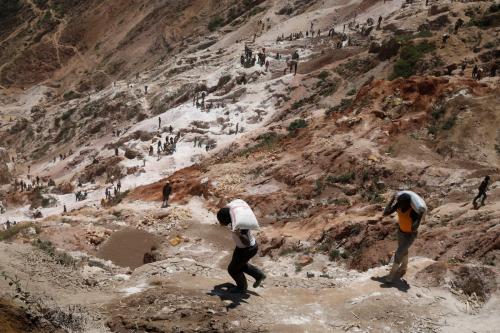Introduction
From the perspective of the United States, the threat environment in Eurasia has changed dramatically over the last 20 years; primarily because Russia has receded as the global strategic competitor for the United States with the collapse of the Soviet Union and the dramatic deterioration of Russian military capability since 1991. The threat of a Soviet nuclear first strike on the United States has been replaced by the risk of an accidental nuclear launch (as a result of Moscow’s possible loss of command and control over its missile systems); and the worst case, nightmare scenario, of a “rogue regime” or terrorist group acquiring a Russian nuclear weapon, (or fissile material, or Soviet-era chemical, or biological agents from across the region) to use against the United States.
Most other identifiable threats in Eurasia directly threaten the security and stability of the regional states themselves and their immediate neighbors rather than the United States. But given the region’s geopolitical location, bordering states of considerable concern to the United States, such as Iran, and China; and the fact that another regional state, Afghanistan, served as the base for the terrorist networks that launched strikes on the United States in September 2001, none of these threats should be unduly minimized. Furthermore, in Ukraine, under former President Leonid Kuchma, the government was implicated in selling radar installations to Saddam Hussein’s government on the eve of the U.S. invasion of Iraq—the culmination of many years of providing conventional weapons to civil conflicts across the globe from Soviet-era weapons factories. There are numerous Soviet-era arsenals and factories across Eurasia––in places like Belarus and the secessionist Trans-Dniester region of Moldova––where leaders are not necessarily well-disposed toward the United States, and where commercial and criminal interests often take precedence in arms sales and transfers over sober calculations of broader security risks. Threats such as these have not been given sufficient U.S. or international attention given the understandable preoccupation with WMD material, but they should also be considered by the panel.
U.S. policy in Eurasia has certainly taken account of many of the threats in the region since the collapse of the Soviet Union. By way of a quick summary, U.S. policy has generally been directed at securing Russia’s Soviet-era nuclear weapons and research facilities; reducing missile stockpiles; eliminating sources of conflict with Russia; and trying to encourage a positive trajectory in this country’s long-term economic and political development. Beyond Russia, the United States has aimed at preventing the emergence of a security vacuum in Eurasia, or a major conflict and instability that might lead to military penetration by states with interests inimical to those of the United States like Iran; and at thwarting attempts to assert a new security monopoly by Russia or another major power like China. Other more specific U.S. concerns have targeted ensuring the development and security of Caspian oil exports across the Caucasus to Turkey through the Baku-Tbilisi-Ceyhan pipeline (local military units in the Caucasus are now being trained for this purpose with American assistance); and, since 2002, addressing new or ongoing threats in Central Asia that might undermine the U.S.-led project of the stabilization and reconstruction of Afghanistan.
The Brookings Institution is committed to quality, independence, and impact.
We are supported by a diverse array of funders. In line with our values and policies, each Brookings publication represents the sole views of its author(s).


Commentary
TestimonyThe Eurasian Security Environment
September 22, 2005